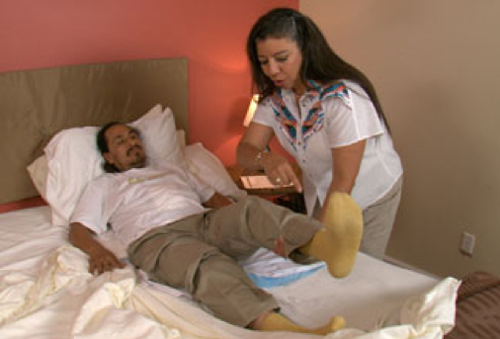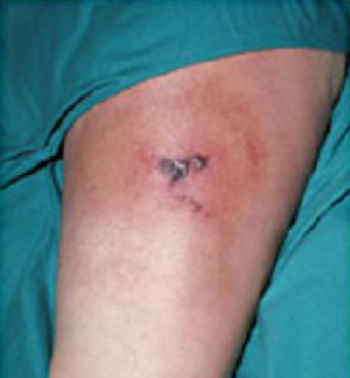
You want the person you provide care for to stay active and exercise as much as possible. This keeps circulation in the legs flowing. If the person has recently been ill or has had surgery, know the restrictions ordered by his or her doctor.
Here are some simple foot and leg exercises:

Alternate dorsiflexion and plantar flexion
Have the person do the same exercises listed above, during trips on a bus, train, or airplane.

Contact the home health agency or the doctor’s office to report any problems with the skin.

Deep Vein Thrombosis of the Thigh
Here are some ways to help reduce a perWhen you provide care for a person who is at risk for DVT, know what to look for. You want to recognize any signs or symptoms as soon as possible. However, according to the National Heart Lung and Blood Institute, only about half of the people who have DVT have warning signs or symptoms. Always check the person’s legs and skin each time you remove or replace a stocking. Generally speaking, elastic stockings are worn through-out the day and removed at bedtime. This is a good time to do skin checks.
Each time you remove the stocking look at both legs carefully, all around each leg.
If a person has a DVT and the clot loosens and travels to the lung, you need to know the Signs and Symptoms of a Pulmonary Embolus:
Travel increases the risk of developing a DVT. A person is inactive while sitting in a car, train, bus, or airplane. Inactivity slows the blood flow in the legs. The risk while flying is greater if a flight is longer than 4 hours. Flying a high altitude causes dehydration, which makes the blood “thicker” and more likely to form clots. Here are some tips from the National Heart, Lung and Blood Institute:
During a long trip, have the person you provide care for:
